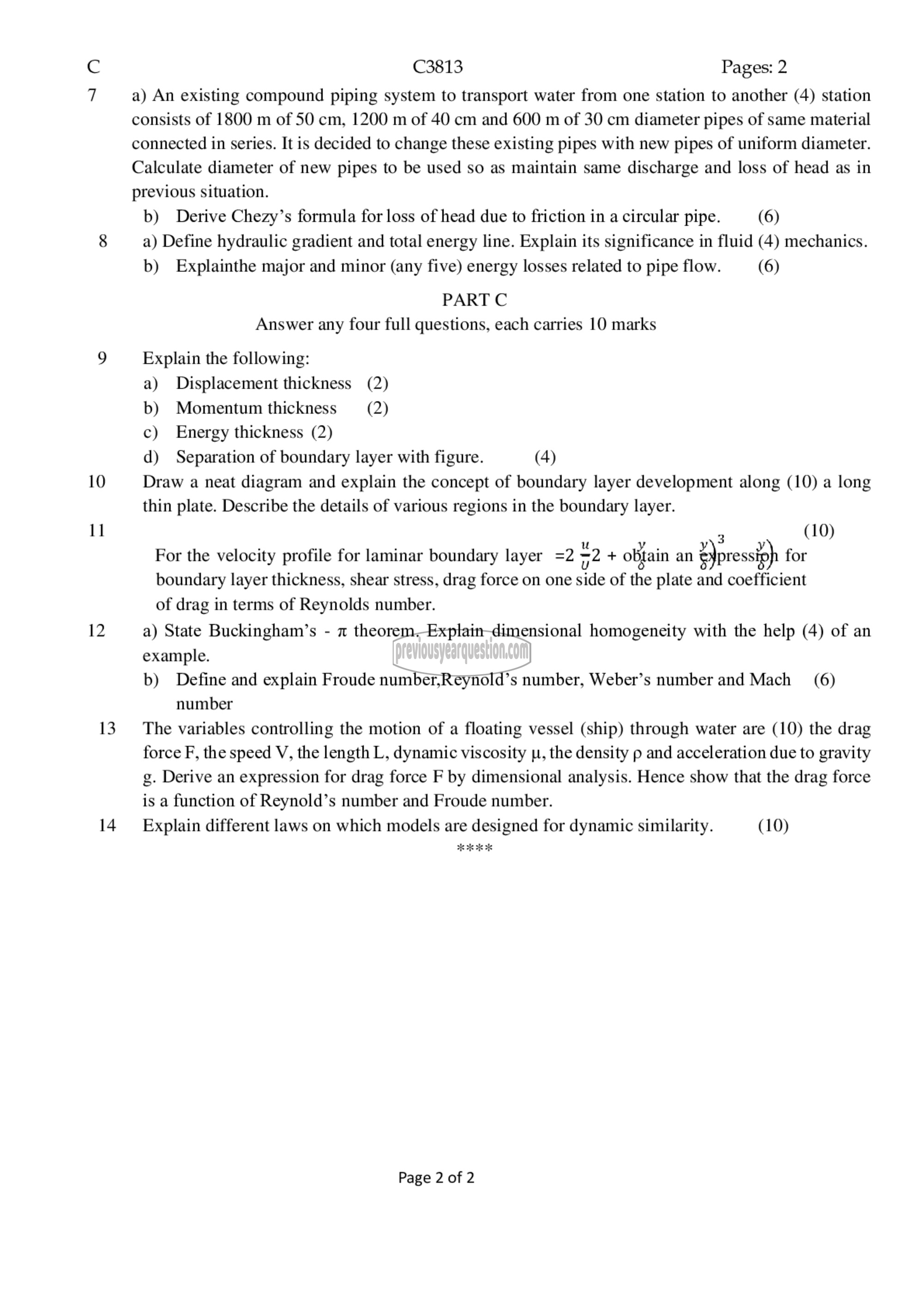APJ ABDUL KALAM TECHNOLOGICAL UNIVERSITY Previous Years Question Paper & Answer
Semester : SEMESTER 3
Subject : Mechanics of Fluids
Year : 2018
Term : APRIL
Branch : MECHANICAL ENGINEERING
Scheme : 2015 Full Time
Course Code : ME 203
Page:2
10
11
12
13
14
C3813 Pages: 2
a) An existing compound piping system to transport water from one station to another (4) station
consists of 1800 m of 50 cm, 1200 m of 40 cm and 600 m of 30 cm diameter pipes of same material
connected in series. It is decided to change these existing pipes with new pipes of uniform diameter.
Calculate diameter of new pipes to be used so as maintain same discharge and loss of head as in
previous situation.
b) Derive Chezy’s formula for loss of head due to friction in a circular pipe. (6)
a) Define hydraulic gradient and total energy line. Explain its significance in fluid (4) mechanics.
b) Explainthe major and minor (any five) energy losses related to pipe flow. (6)
PART ^
Answer any four full questions, each carries 10 marks
Explain the following:
a) Displacement thickness (2)
b) Momentum thickness (2)
c) Energy thickness (2)
d) Separation of boundary layer with figure. (4)
Draw a neat diagram and explain the concept of boundary layer development along (10) a long
thin plate. Describe the details of various regions in the boundary layer.
3 (10)
F ⋅ ⋅ ⋅ u 3. y 2
or the velocity profile for laminar boundary layer ಎ2 72 + obtain an &)pressiph for
boundary layer thickness, shear stress, drag force on one side of the plate and coefficient
of drag in terms of Reynolds number.
a) State Buckingham’s - ர theorem. Explain dimensional homogeneity with the help (4) of an
example.
b) Define and explain Froude number,Reynold’s number, Weber’s number and Mach (6)
number
The variables controlling the motion of a floating vessel (ship) through water are (10) the drag
force F, the speed V, the length L, dynamic viscosity 1, the density p and acceleration due to gravity
g. Derive an expression for drag force F by dimensional analysis. Hence show that the drag force
is a function of Reynold’s number and Froude number.
Explain different laws on which models are designed for dynamic similarity. (10)
Page 2 of 2
